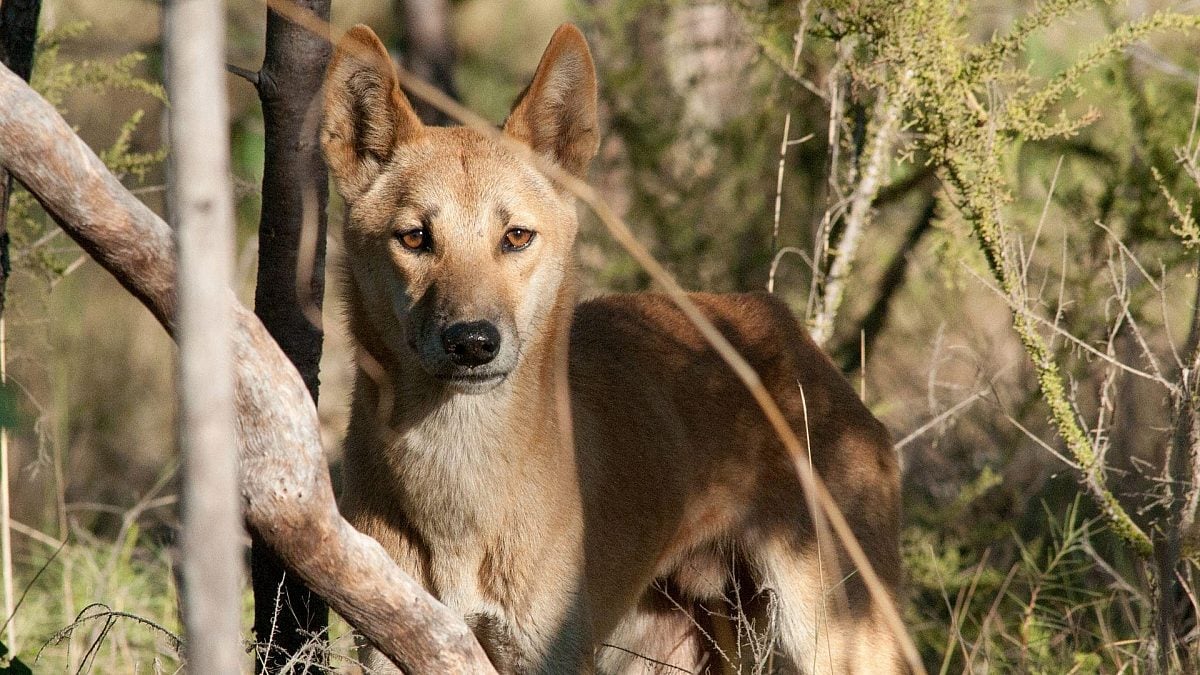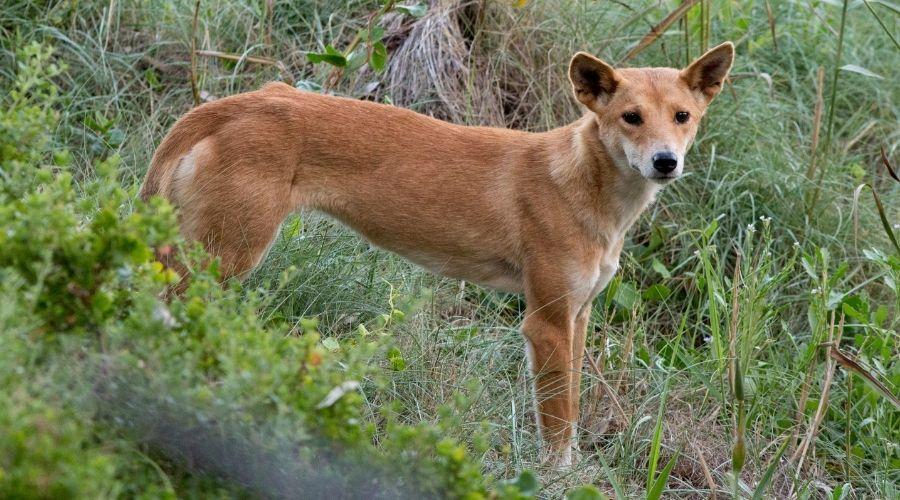Wilderness Journal

10 facts about dingoes
The dingo is a staple of the Australian landscape, a canine oddity in a land of marsupials, and we're still unravelling the canine's many secrets.
Dingoes have been prowling the continent in packs for thousands of years. They are an integral part of ecosystems from forest to desert and everything in between, but the canines remain a mysterious addition to Australia's fauna. Here are 10 facts to brush up on your dingo knowledge.

- The oldest, reliable date for the dingo's presence in Australia is 3,250 years ago thanks to fossilised remains found in Mereguda Cave on the Nullarbor Plain (Balme et al. 2018).
- Dingoes tend to be ginger in colour with white socks, but in arid regions they are more golden-yellow, while their fur tends to be darker in colour in forest areas. (Australian Museum)
- The dingo is the largest mammalian carnivore in Australia (excluding humans!).
- Only dominant members of a pack will breed, the others take care of feeding the pups. (Australian Museum)

- Dingoes are not descendants of grey wolves despite looking like them. However, they do share a common ancestor with a “ghost population of wolves that disappeared at the end of the Late Pleistocene”. (PLOS Genetics, Genome Sequencing Highlights the Dynamic Early History of Dogs)
- Dingoes tend to howl rather than bark. They often howl at night to gather the pack and deter intruders. They also communicate via scent, defecating and urinating to mark their territory. (Australian Museum)
- When they do bark, it’s almost exclusively used for giving warnings.
- Dingoes' morphology has remained the same for the past 3,500 years, which suggests that artificial selection has never taken place. (The Dingo Debate: Origins, Behaviour and Conservation by Bradley Smith; CSIRO Publishing)
- Dingoes are an apex predator, keeping natural systems in balance. They also prey on some feral species, which in turn has a major benefit for native wildlife. (Queensland Government Department of Environment and Science)
- Dingoes live for around 10 years and start breeding once they reach the age of one or two. Unlike our pet dogs, dingoes can only breed once a year, with litters of around four to six pups born in places like a hollow log or under a rock ledge. (Queensland Government Department of Environment and Science)
Learn more: Your burning questions answered about Australia's apex land predator: the dingo
Plus two bonus facts to impress your nature-loving friends:
- Dingoes have rotating wrists
- Their shoulder joints are also quite flexible, which helps with climbing
Learn more about dingoes
Your burning questions answered about Australia's apex land predator: the dingo